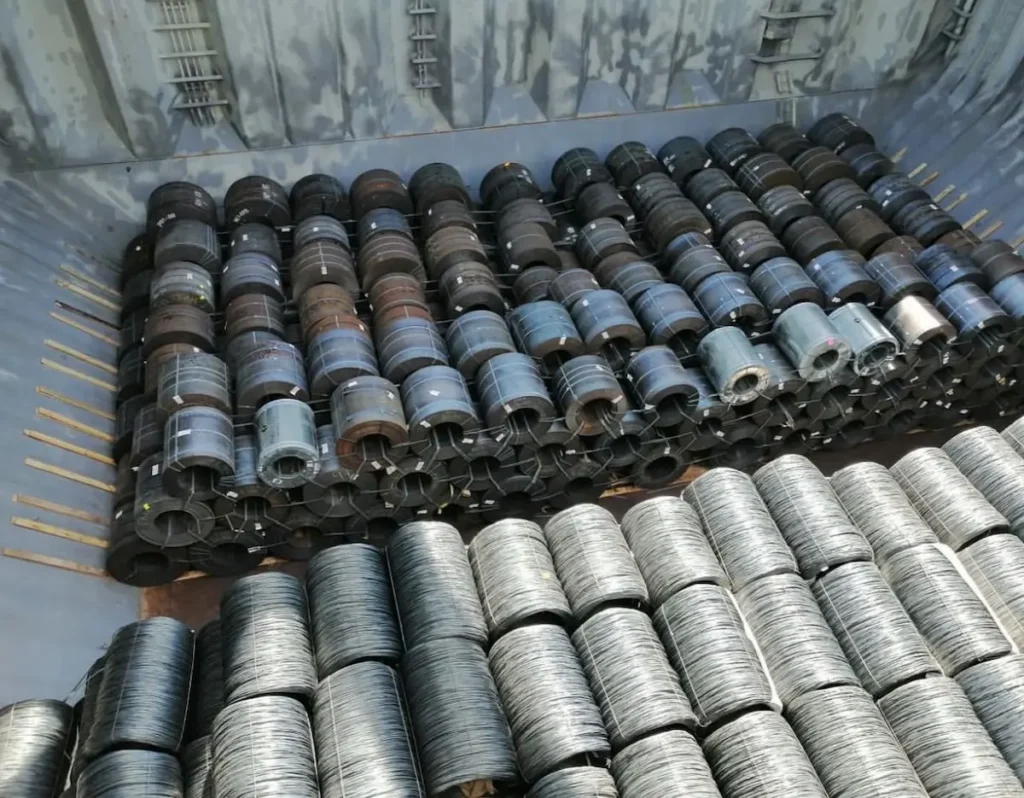General cargo ships are essential vessels in global maritime logistics, transporting diverse goods like machinery, building materials, and food products.
Unlike container ships, they handle both containerized and loose cargo, making them highly versatile and valuable in meeting the complex demands of international trade.
This article explores their critical roles, the types available, and the latest innovations that are shaping the future of general cargo shipping.
Key Roles of General Cargo Ships
General cargo ships perform vital functions in maritime logistics, enabling smooth trade across continents. Their roles can be divided into three main areas:
- Transport of Mixed Cargo
General cargo ships are known for their ability to carry different types of goods simultaneously. For instance, they may transport heavy machinery alongside bulk materials, meeting the needs of industries such as construction and manufacturing. - Access to Remote or Specialized Trade Routes
These ships operate on routes that container ships may not reach, particularly in remote or less developed ports. For example, general cargo ships supply essential goods to areas in the Arctic or small island ports, demonstrating their adaptability. - Efficient Loading and Unloading Operations
Equipped with onboard cranes and loading systems, these ships can load and unload various cargo types directly, reducing port time and increasing operational efficiency. Onboard cranes, which can lift loads of up to 50 tons per crane, are particularly valuable for ports without advanced infrastructure.

Types of General Cargo Ships
Different types of general cargo ships are tailored for specific operational needs. Here’s a breakdown of the main types:
| Type | Description | Common Cargo Examples |
|---|---|---|
| Break-Bulk Carriers | Transport loose, non-containerized items, often palletized or in large bundles. | Steel coils, pipes, large machinery |
| Bulk Carriers | Designed for large quantities of homogeneous materials in bulk form. | Coal, grains, minerals |
| Multi-purpose Ships | Adapted for both containerized and break-bulk cargo, offering flexibility. | Containers, vehicles, equipment |
| Heavy-lift Ships | Built for oversized or exceptionally heavy items. | Construction machinery, turbines, generators |
| Project Cargo Ships | Custom-built for complex, high-value cargo requiring special handling techniques. | Industrial plants, infrastructure components |
Each type is chosen based on cargo characteristics, route needs, and handling requirements, ensuring safe and efficient delivery.
Key Considerations for Choosing a General Cargo Ship
When selecting a general cargo ship for specific transport needs, logistics companies often consider these factors:
- Cargo Type and Requirements: Each cargo type has unique requirements. For instance, break-bulk carriers suit heavy machinery, while bulk carriers are ideal for homogeneous materials like coal or grain.
- Route and Destination: General cargo ships are preferred for remote or less accessible ports, making them versatile compared to container vessels.
- Loading and Unloading Equipment: Onboard cranes and specialized loading equipment allow general cargo ships to efficiently handle diverse cargo types, for example, cargo in bags or big-bags.
Practical Scenarios: When to Use Different Ship Types
- Break-Bulk vs. Multi-purpose Ships: Break-bulk carriers are ideal for oversized items like steel coils and pipes, whereas multi-purpose ships handle both containerized and break-bulk cargo.
- Bulk Carriers for Homogeneous Cargo: Bulk carriers are chosen for large quantities of single commodities, such as grain or coal, lowering costs by up to 15% per ton.
- Heavy-lift Ships for Oversized Cargo: Heavy-lift ships are used when cargo requires specialized handling, such as construction machinery and turbines, with crane capacities reaching up to 1,000 tons.
Modern Innovations in General Cargo Ships
1. Automation and Digitalization
- Autonomous Navigation: Increasingly, ships are integrating semi-autonomous navigation systems, reducing the need for large crews and enhancing safety. Autonomous systems, already in partial use, lower operating costs by up to 30%.
- IoT and Smart Sensors: Internet of Things (IoT) sensors track cargo conditions, such as temperature and humidity, in real-time. This technology improves cargo safety and visibility, especially for sensitive goods like pharmaceuticals.
2. Environmental Sustainability
- Fuel Efficiency and Hybrid Engines: Ships are now equipped with hybrid engines and optimized hull designs, improving fuel efficiency by up to 25% and reducing emissions significantly.
- Waste Management: Many ships are incorporating waste reduction systems that handle ballast water and other waste products, aligning with international environmental regulations.
3. Cold Chain and Controlled Atmosphere Technology
- Refrigerated Cargo Solutions: Cold chain technology allows general cargo ships to transport temperature-sensitive products over long distances. For example, fruits, vegetables, and medicines stay fresh due to controlled refrigeration systems.
- Controlled Atmosphere: This technology maintains specific oxygen and CO2 levels to prolong the freshness of perishables, reducing spoilage rates by 15% in certain cargo types.
4. Enhanced Safety Features
- Stabilization Systems: Advanced stabilization systems improve ship stability in rough seas, protecting cargo and ensuring crew safety.
- Fire and Hazardous Material Detection: Early detection systems for fire and hazardous materials have significantly improved safety on board, providing quick responses to potential hazards.
Future Trends in General Cargo Shipping
The future of general cargo ships lies in continued advancements in automation, environmental sustainability, and fuel efficiency:
- Fully Autonomous Ships: Expected within the next decade, autonomous vessels promise lower operational costs and increased safety.
- Zero-Emission Goals: As part of global sustainability targets, general cargo ships are adopting alternative fuels, like hydrogen or biofuels, to meet zero-emission regulations.
- Advanced Digital Twins: Digital twin technology enables ship operators to simulate cargo handling, balancing, and route optimization, improving operational efficiency and reducing risks.
- Types of Gas Carriers as per IGC Code – April 22, 2025
- Wind-Assisted Propulsion Systems (WAPS): A Game Changer for Maritime Decarbonization – February 6, 2025
- 10 Boat Salvage Yards in California – January 25, 2025



